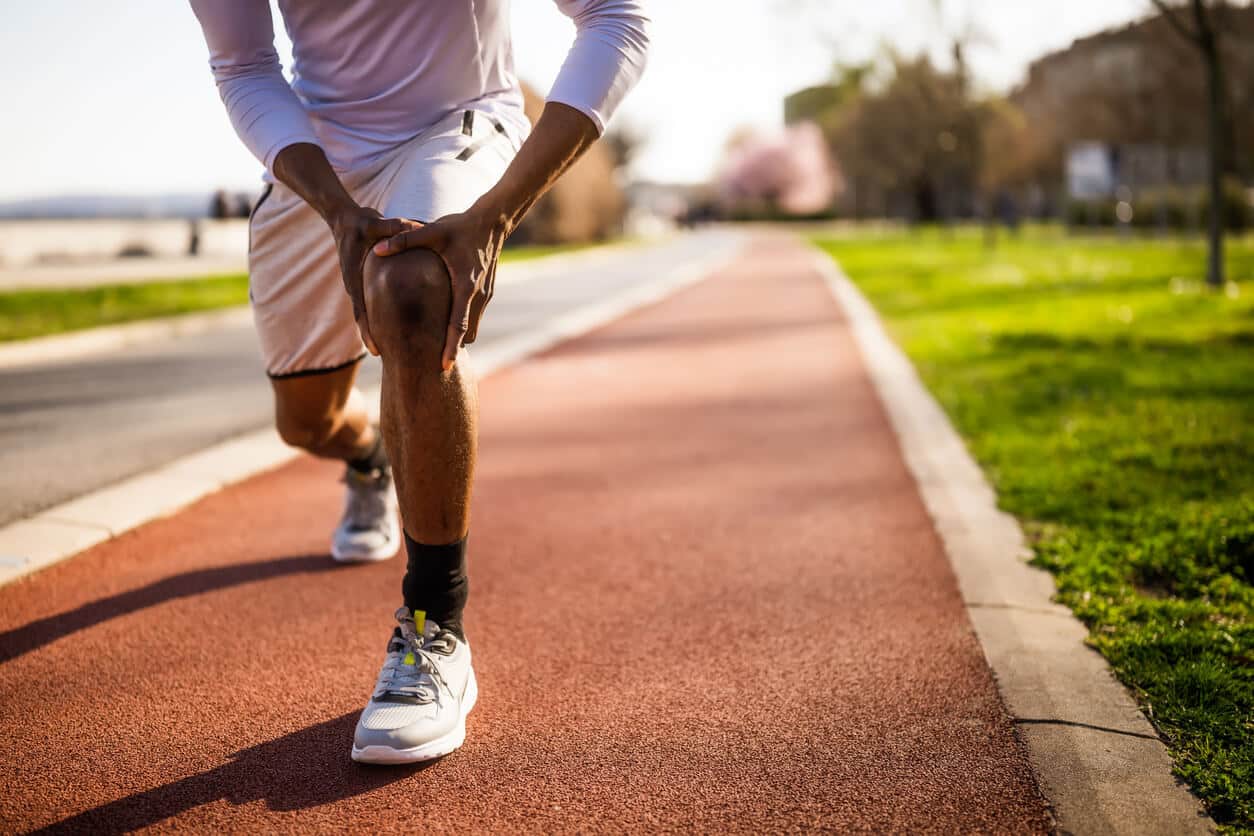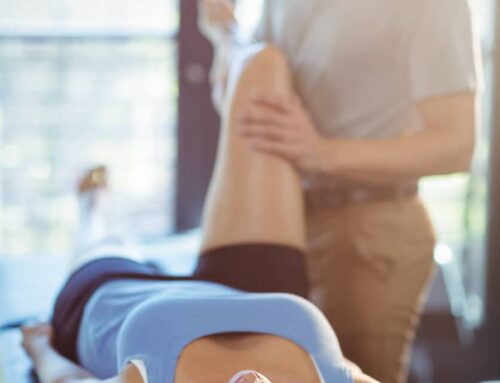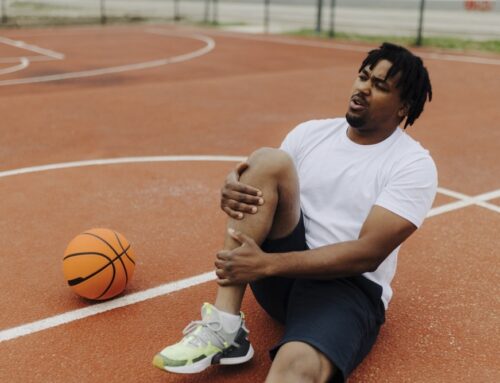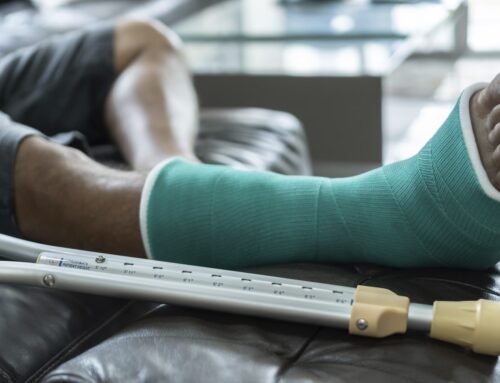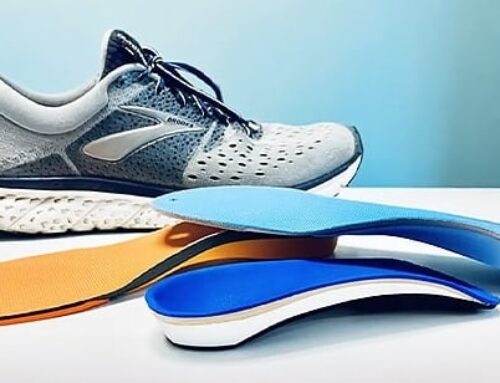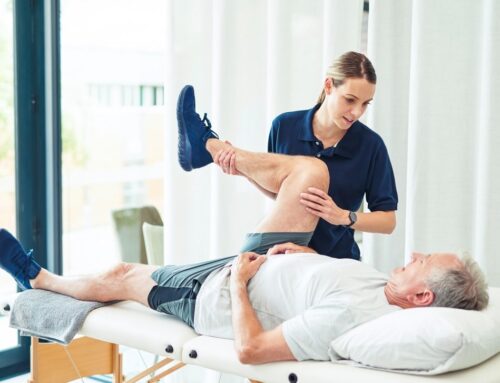Sports injuries happen to athletes at all levels, from weekend warriors to professional competitors. When you search for a sports doctor, you want to find specialists who understand the unique demands of athletic performance and recovery.
Cary Orthopaedics has been treating sports injuries for over 40 years, helping athletes get back to their peak performance safely and effectively.
Let us explore the top sports injuries that bring athletes to Cary’s leading sports medicine specialists.
Knee Injuries: The Most Common Athletic Problems
Knees endure immense stress during sports, acting as the body’s shock absorbers. This makes them prone to injuries that can sideline athletes.
ACL Tears
The anterior cruciate ligament (ACL) connects the thighbone to the shinbone and is one of the most serious knee injuries in sports. ACL tears often occur during sudden stops or quick direction changes. Athletes may hear a “pop,” followed by swelling, instability, and difficulty walking.
Doctors diagnose ACL tears with physical exams and MRIs. Treatment depends on severity and athletic goals. Complete tears often require surgery, while partial tears may heal with therapy and use of braces.
Meniscus Tears
The meniscus is cartilage that cushions the knee joint, and meniscus tears happen from twisting motions or direct contact, leading to pain, swelling, and stiffness.
Minor tears may heal with rest and therapy, while severe tears could need arthroscopic surgery.
Knee Sprains and Strains
Sprains involve stretched or torn ligaments, while strains affect muscles and tendons around the knee. Both cause pain, swelling, and limited motion.
Treatment includes rest, ice, compression, and elevation. Physical therapy helps restore motion and strength, allowing most athletes to return to sports within weeks.
Shoulder Injuries: Challenges for Overhead Athletes
The shoulder is the most mobile joint in the body, making it prone to instability and injury. Overhead sports increase the risk of shoulder injuries.
Rotator Cuff Tears
The rotator cuff is made up of four tendons and muscles that stabilize the shoulder. Tears can result from overuse or sudden trauma.
Symptoms include shoulder pain, weakness, and difficulty lifting. Minor tears may improve with therapy and medications like ibuprofen while severe tears often require surgery.
Shoulder Dislocations
A dislocation happens when the arm bone pops out of the socket, common in contact sports. Symptoms of dislocation include severe pain and visible deformity.
Emergency treatment relocates the joint. Rehabilitation strengthens muscles to prevent future dislocations, though some cases require surgery for ligament repair.
Shoulder Impingement
Impingement occurs when tendons are pinched between bones, often due to repetitive overhead motions. Pain worsens when lifting the arm.
Treatment includes rest, physical therapy, and anti-inflammatory medications. Cortisone injections can provide temporary relief, but surgery is rarely needed.
Overuse Injuries: When Training Becomes Excessive
Overuse injuries develop gradually from repetitive stress. They are common in endurance sports and repetitive activities.
Stress Fractures
Stress fractures are small bone cracks from repeated impact. Runners, dancers, and gymnasts face higher risks. Common locations include shin, foot, and hip bones.
Athletes experience pain that worsens with activity. Treatment requires several weeks of rest from high-impact activities. Severe cases may need casting or surgery.
Tendinitis
Tendinitis involves tendon inflammation from overuse. Common types include tennis elbow and Achilles tendinitis. Athletes experience pain and stiffness around affected tendons.
Treatment includes rest, ice, and anti-inflammatory medications. Physical therapy addresses movement patterns that contribute to the condition. Severe cases may benefit from platelet-rich plasma injections.
Ankle Sprains: The Most Common Sports Injury
Ankle sprains account for 25% of sports injuries and occur when ligaments stretch or tear. Lateral sprains, common in sports like basketball and soccer, affect the outside of the ankle and cause pain, swelling, and difficulty walking.
High ankle sprains involve ligaments above the ankle, take longer to heal, and require extended immobilization and rehab. Both injuries benefit from rest, ice, compression, elevation, and physical therapy.
Hand and Wrist Injuries: Often Overlooked
Hand and wrist injuries occur in sports involving catching, throwing, or equipment contact.
Wrist Sprains
Wrist sprains happen when ligaments stretch or tear. They often result from falls on outstretched hands. Gymnasts, skiers, and football players commonly experience these.
Treatment includes splinting, physical therapy, and gradual return to activity. Severe sprains may require surgery to repair damaged ligaments.
Finger Fractures
Finger fractures occur from direct impact with balls or equipment. Basketball and volleyball players face higher risks.
Treatment depends on fracture type and location. Simple fractures may heal with splinting. Complex fractures require surgery and hardware.
Treatment Approaches at Cary Orthopaedics
Cary Orthopaedics offers comprehensive sports medicine care. Our sports doctors use evidence-based treatments to restore peak performance.
Non-Surgical Treatments
Many sports injuries respond well to conservative care. Treatments include:
- Physical therapy to restore strength and flexibility.
- Anti-inflammatory medications to reduce pain and swelling.
- Corticosteroid injections for persistent inflammation.
- Platelet-rich plasma therapy for certain tendon injuries.
- Bracing or taping for support during healing.
Surgical Interventions
When conservative treatments fail, surgery may be necessary. At Cary Orthopaedics, we offer minimally invasive procedures whenever possible. Our common surgeries include:
- Arthroscopic knee surgery for ACL tears and meniscus injuries.
- Shoulder arthroscopy for rotator cuff repairs.
- Fracture fixation with plates, screws, or pins.
- Tendon repair and reconstruction procedures.
Rehabilitation and Recovery
Proper rehabilitation is essential for a safe return to sports. Our team provides comprehensive physical therapy services to help athletes regain strength, flexibility, and sport-specific skills.
Sports Medicine Doctors Near Me in Cary, Holly Springs, and Morrisville, NC
Our experienced sports medicine team at Cary Orthopaedics is ready to help you recover. Our board-certified orthopedic and sports medicine providers specialize in diagnosing and treating sports injuries. Our doctors are trained in both orthopedic surgery and non-surgical treatments to help you get back to your active lifestyle as quickly and safely as possible.
We have three convenient locations in Cary, Holly Springs, and Morrisville for your convenience. For more information, contact us at 919.467.4992. To schedule your appointment, call our office today at 919.573.4825. We look forward to serving you!

